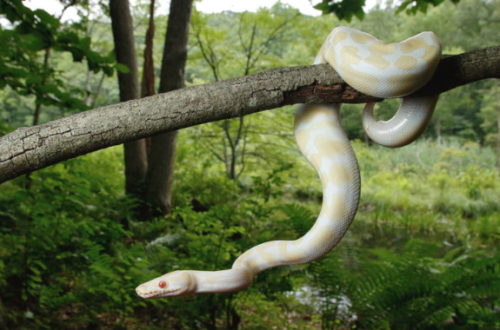Quarantine Quick Guide
Bringing Home Your New Snake
A guide for safe reptile acquisitions.
The following information is intended as a basic guide for quarantine procedures to ensure the safety and health of the new animal and the rest of your reptiles. Please consult an exotic vet that specializes in reptiles if you are experiencing any difficulties with your animal(s).
Bringing a new pet into our homes or a new snake into our collection is always an exciting time. To ensure the safety and health of the new animal as well as the rest of the animals in your home, new animals should be quarantined for at least 30 days, up to 180 days depending on the origin of the animal. (Field Collected, aka wild-caught, animals or those born from FC females should be quarantined longer and be taken to the vet to check for parasites and pathogens.)
Step 1: Quarantine set-up
It is important to have a quarantine setup prepared before your new addition arrives. This can be whatever is most appropriate to house your new reptile comfortably. It should be located away from your current reptiles in another room or even in another building. Dedicated feeding tongs, water dishes, and other husbandry equipment should be kept in your quarantine area, only for use there.
Paper or paper towels should be used as your substrate, so you can more easily monitor for mites, healthy stool, or other bodily fluids. Any hides, water bowl, and décor should be non-porous and easy to clean and disinfect. Everything should be clean and fresh for your new pet.
Step 2: Arrival & Prep
When your new reptile comes home, you want to take it directly to the quarantine area before you take it out of the travel container or shipping box. Remove the animal and inspect it closely for signs of dehydration, mites, or anything else not 100% perfect. Take some photos to document the animal even if everything seems great.
Here at KP Exotics, we treat all new arrivals for reptile mites even if they don’t show any signs of having them. It is a precaution that has served as well and it isn’t harmful to the snake. There are many mite treatment protocols out there. A quick search for “snake mite treatment” on YouTube will give you a few options. We prefer the Frontline Spray or Ivermectin mix topical treatments depending on the species and size of the animal. If it was shipped, a soak in lukewarm water before the treatment to help hydrate the snake is a good idea as you will want to withhold water for 24 hours no matter which mite treatment method you chose to use.
Step 3: Handling & Care
To prevent the spread of any virus or bacteria, animals should be handled with care while in quarantine. Any handling, feeding, and maintenance on your new reptile should be done last after you have completed the same with your other pets. After working with your new animal, wash and sanitize your hands and any surfaces the animal or its feces/urates/shed has come into contact with. Water bowls, feeding tongs, décor, and any other husbandry equipment should not be shared between animals in quarantine and those you already have.
If you bring in a new animal into the same area while one is still in quarantine, the clock starts over on the first one.
What if something is wrong?
If you find reptile mites, treat the animal (again) along with the rest of your collection. Proper quarantine procedures should keep your other animals safe, but mites are sneaky jerks. It’s much better to treat everything on the front end than have to battle mites again in a couple of months when they have spread.
If you notice your new animal exhibiting any signs of illness or distress, document it and make an appointment to see your exotics vet as soon as possible. Notify the person or business where you got the animal from, especially if you haven’t had it for very long. Keep copies of all vet records and photo/video documentation of symptoms. If this was a pre-existing condition, the seller should reimburse you for all or at least part of your vet bills.



